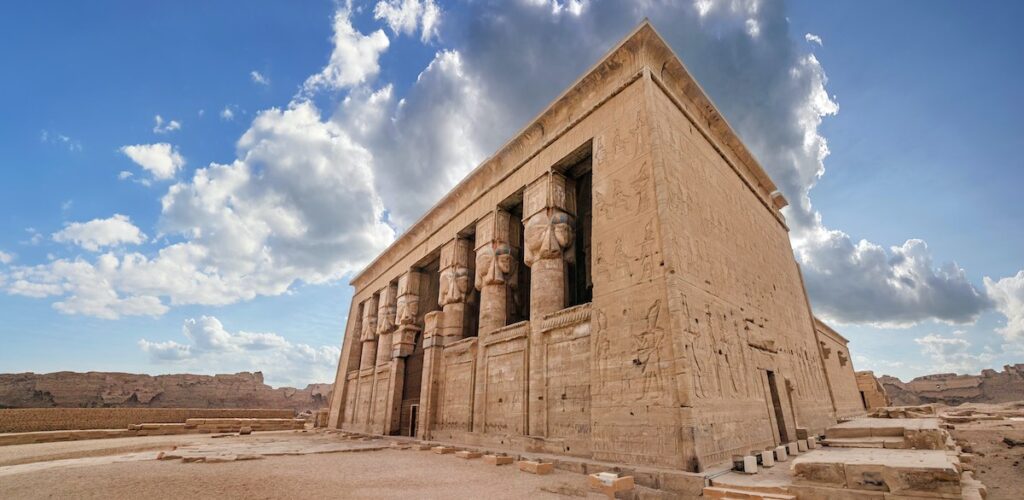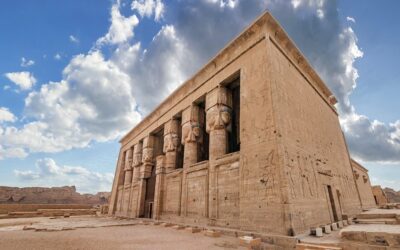
The Temple of Hathor is one of the most overlooked marvels that line the Nile River. One of the most well-preserved temples in all of Egypt, the structure boasts unique features that blend a long line of ancient cultures and traditions. The site is part of a complex of temples at Dendera that worked as a widely used worship and healing center during the Ptolemaic era, the last of Egypt’s great ancient dynasties. The temple honors Hathor, a multi-faceted sky deity often depicted as having a cow’s head who was either consort or mother to the pantheon’s chief gods Horus and Ra.
Construction of the building took place over a period of thirty-four years that began in 54 BC and was carried into the reign of the famous Cleopatra VII. However, texts refer to a temple at the city of Dendera, originally called Enet-t-neter or “Enet of the Goddess,” being rebuilt during the Old Kingdom that lasted between 2575 BC and 1250 BC.
The most vivid part of the temple is its hypostyle hall that is covered in highly detailed carvings and well-preserved paint. Eighteen columns hold up the ceiling topped by large depictions of Hathor’s human face with cow ears. All columns, including her depiction, are shaped like a sistrum, a procession rattle largely linked to the goddess that was played at major festivities. The walls and ceiling are an intricate mosaic of images of gods and hieroglyphics. The temple also includes fourteen secretly accessed crypts, eleven of which are decorated.
The most compelling item found at the site is the Dendera Zodiac. On the hall’s ceiling a giant bas-relief was found depicting a night skyscape using human and animal figures. The particular configuration of planets occurs only once every thousand years. The portrayal blends Babylonian, Greek, and Egyptian astronomical theories. While the original is housed at the Louvre in Paris, a replica can be found at the temple.
During celebrations of the new year in ancient Egypt, it was said that Hathor would leave her temple to visit her son or husband at the Temple of Horus in Edfu, another often-overlooked wonder.




